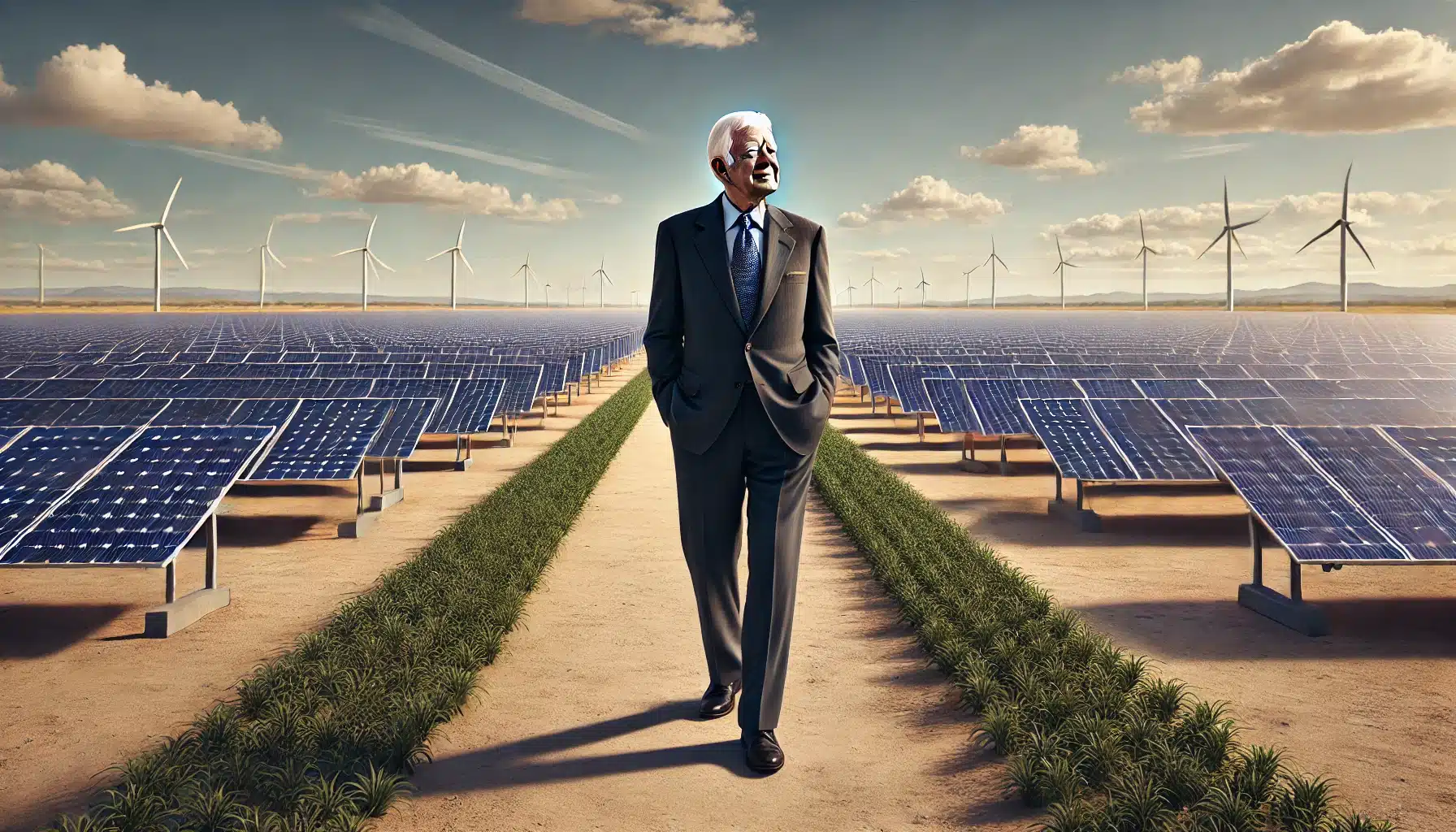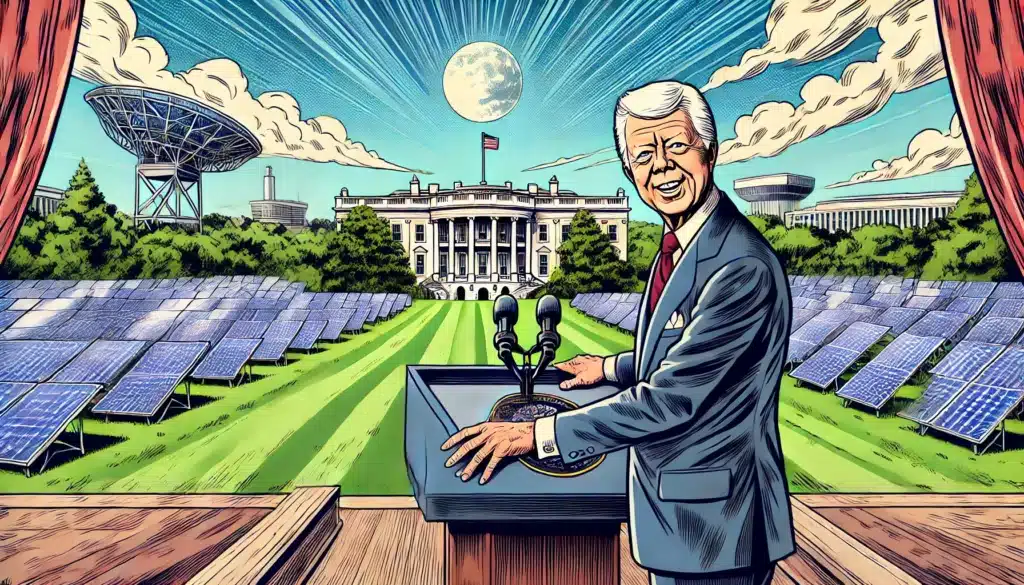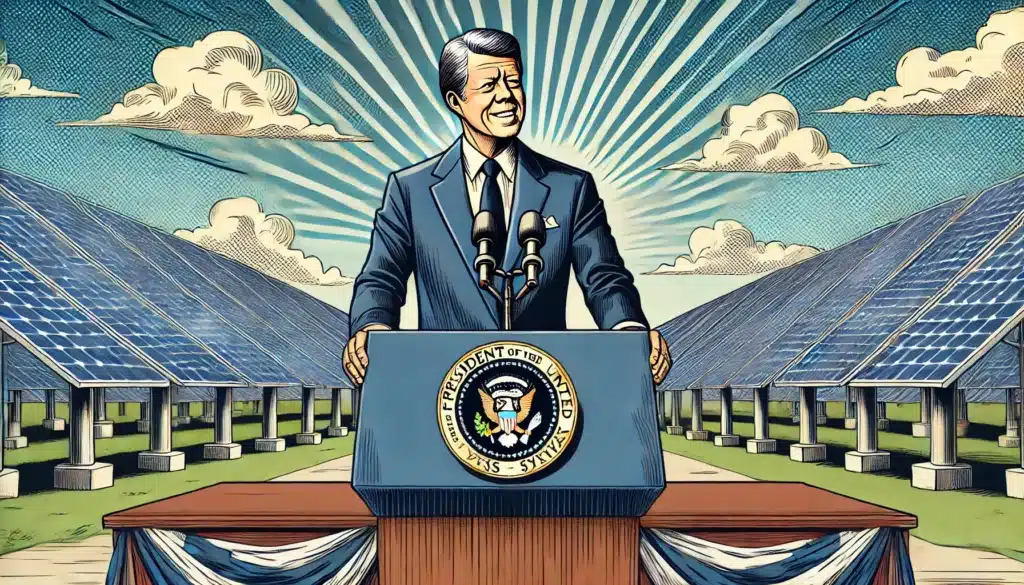President Jimmy Carter was ahead of his time in recognizing the potential of solar energy as a reliable source of electricity for Americans. During his presidency, he made major strides in advancing renewable energy by launching initiatives to promote and incentivize its use. He established the Solar Energy Research Institute (SERI) which later became the National Renewable Energy Laboratory (NREL) and implemented tax credits and other incentives to encourage businesses and consumers to invest in solar power. This article will explore how President Carter’s commitment to renewable energy helped drive its development as a viable source of electricity today.
Overview of President Jimmy Carter’s commitment to solar energy
President Jimmy Carter was a strong advocate of renewable energy and solar power during his tenure as the 39th president of the United States. As early as 1979, he launched an ambitious campaign to make solar energy a viable source of electricity for Americans by creating tax credits and other incentives for businesses to invest in the technology. He also established the Solar Energy Research Institute (SERI) which later became the National Renewable Energy Laboratory (NREL). This initiative was tasked with researching and developing cost-effective solar power solutions to make them more accessible to consumers.

Establishment of the Solar Energy Research Institute (SERI) and how it became the National Renewable Energy Laboratory (NREL)
President Jimmy Carter established the Solar Energy Research Institute (SERI) to research and promote solar energy technologies. The organization was established with the mission of advancing the use of solar power to provide clean, affordable, and sustainable energy for all Americans. The Carter Administration also provided tax credits and other incentives to encourage consumers and businesses to invest in solar power.
Under President Jimmy Carter’s leadership, SERI was reorganized into the National Renewable Energy Laboratory (NREL) in 1977. NREL became the nation’s primary research center for the development of renewable energy sources such as solar energy, wind power, geothermal energy, and bioenergy. NREL continues to play a major role in the advancement of renewable energy technologies today.
The establishment of NREL was greatly beneficial in driving advancements in solar energy technology and its use as a viable energy source for Americans. It allowed for further research into new solar applications and methods of providing clean, affordable energy to US citizens. With the help of President Carter’s commitment to renewable energy, solar power has come a long way and is now used by millions around the world. The establishment of NREL was a major milestone in the development of solar power as an accessible source of electricity for Americans.
President Jimmy Carter’s commitment to renewable energy, and in particular solar power, helped drive the development of this clean energy source as a viable option for Americans. The establishment of NREL was instrumental in furthering research into the technology and making it more accessible and affordable for US citizens. Carter’s efforts were integral in helping solar power become the reliable energy source it is today.

Tax credits and other incentives implemented by Carter to encourage investment in solar power
Jimmy Carter was a passionate advocate for solar energy, becoming the first president to install solar panels on the White House roof during his term. One of the key steps Carter took to promote solar power was implementing tax incentives and other investment-encouraging measures.
For consumers, Carter’s administration established a 30% federal tax credit for solar systems installed on residential homes. This credit, which has since been extended and modified in subsequent years, sought to reduce the cost of installing a solar system by covering some of the associated costs. For businesses, Carter’s administration implemented an Investment Tax Credit (ITC) which granted eligible companies up to 10% of their qualified investments in solar energy. This ITC has also been extended since Carter’s administration, though it was significantly reduced in 2019 after reaching its peak at 30% the previous year.
In addition to these tax credits, Carter also implemented several other incentive programs such as low-interest loans and grants to encourage investment in renewable energy sources like solar. These measures helped to bring solar energy into the mainstream, making it a more viable option for average Americans and businesses looking to reduce their electricity costs.
The impact that President Carter’s initiatives had on renewable energy development as a viable source of electricity for Americans today
Today, solar power is among the fastest-growing sources of electricity in the United States. This can be attributed to Carter’s initiatives and his commitment to renewable energy. In fact, since his administration implemented incentives for solar power, its costs have decreased significantly, making it more accessible to many Americans. The US Solar Market Insight report states that in 2019 solar electricity production more than doubled from the previous year, and it continues to grow significantly.
How President Carter’s legacy continues to influence renewable energy policy today

President Carter’s legacy continues to influence renewable energy policy today in several different ways. First and foremost, his dedication to renewable energy has shaped the way that the US government views these sources as viable alternatives to traditional forms of electricity production. In particular, his tax credits and other incentives have opened the door for increased investment in solar power. Additionally, the National Renewable Energy Laboratory (NREL) – formerly the Solar Energy Research Institute established by Carter’s administration – continues to be a leader in the research and development of renewable energy technologies.
Conclusion
President Jimmy Carter’s commitment to renewable energy, and in particular solar power, helped drive the development of this clean energy source as a viable option for Americans. His establishment of NREL was instrumental in furthering research into the technology and making it more accessible and affordable for US citizens.
The tax credits and other incentives implemented by Carter were essential in helping solar power become the reliable energy source it is today. President Carter’s legacy continues to influence renewable energy policy with his dedication to these sources being seen through increased investment opportunities and advancements made at NREL.
It is clear that President Carter had an immense impact on how we view renewable energy resources today, paving the way toward a future powered by sustainable solutions.






